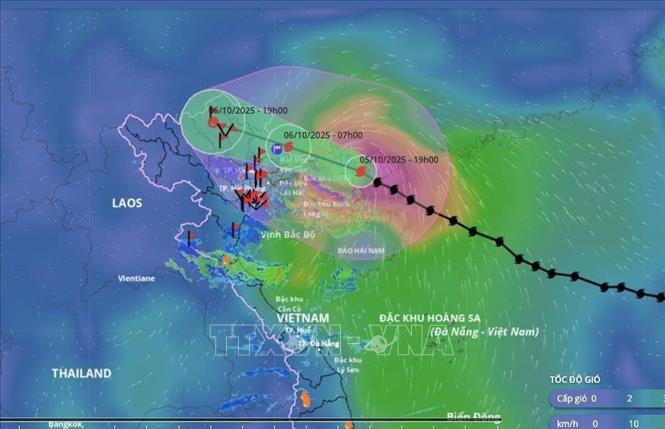
Notably, storm No. 11 occurred when many northern localities had just suffered heavy damage from storm No. 10, making the situation of "storm on storm, flood on flood" extremely complicated. Localities from Lao Cai, Quang Ninh, Hai Phong to Ninh Binh, Hung Yen... have simultaneously deployed emergency response measures, prioritizing the safety of people, dyke systems, dams and key infrastructure.
Emergency Response Preparedness
In the context of Quang Ninh having to overcome the consequences of storm No. 10 and respond to a new storm and being affected by storm No. 11, on October 5, Senior Lieutenant General Nguyen Van Nghia, Deputy Chief of the General Staff of the Vietnam People's Army, Head of the Ministry of National Defense's working delegation, directly inspected and urgently directed the work of preventing and fighting storm No. 11 in Quang Ninh province. The Senior Lieutenant General requested that the most important task at present is to strengthen safety assurance at sea before storm No. 11 makes landfall, and at the same time, thoroughly instruct agencies and units to strictly implement the direction of the Central Government and the Ministry of National Defense.
According to the report, Quang Ninh province has mobilized nearly 4,200 officers and soldiers and 68 vehicles (boats, special vehicles) ready to move. Units in the area have strictly maintained 100% of their personnel on duty, ready to respond and handle situations.
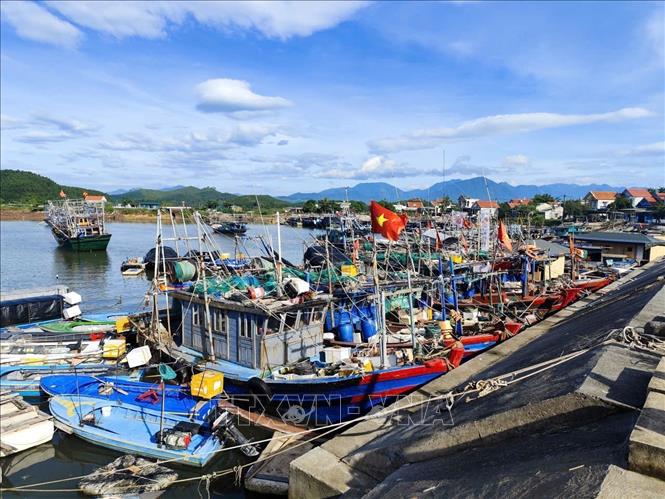
Other key response tasks are being implemented synchronously by the locality, including: Organizing information about the storm to the community, reviewing places to evacuate people, boat anchorage areas, construction works under construction, coastal tourist areas. Paying special attention to reviewing areas with potential risks of flooding and landslides; organizing dredging of urban drainage systems, canals, pruning trees and branches; resolutely not allowing people to stay on ships, boats, cages, rafts and camps in areas at risk of insecurity (near the foot of hills, areas at risk of landslides and flooding)... Coal industry units have prepared means and human resources to respond to situations of heavy rain in mines and tunnels, and are ready to support localities when requested...
In Hai Phong, Vice Chairman of Hai Phong City People's Committee Tran Van Quan requested coastal and island localities to maintain strict duty, absolutely not be subjective; continue to call on ships to leave dangerous areas, ensuring the safety of people, tourists and property. Armed forces were assigned to prepare rescue, relief and emergency response plans if the storm caused major impacts.
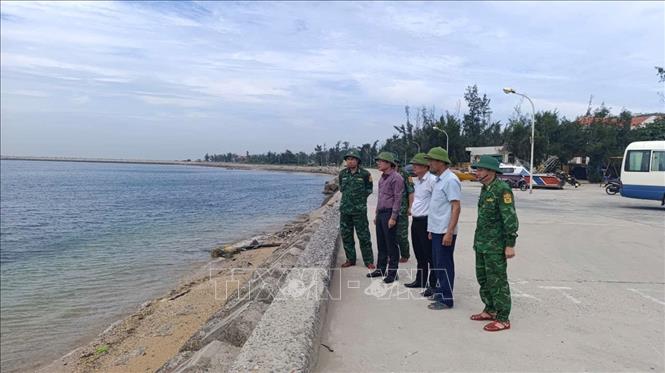
As of 9:00 a.m. on October 5, the Hai Phong Border Guard had counted and notified 1,603 vehicles with 4,488 workers of the storm's developments so that they could proactively avoid it. Preparations by departments and branches were also comprehensively deployed. The Department of Construction reviewed old and degraded apartment buildings; trimmed and tied trees to ensure safety. The electricity sector inspected the electrical system and prepared backup generators for key facilities. The Department of Industry and Trade directed businesses to stockpile essential goods, food, and drinking water to stabilize the market during and after the storm.
In Lao Cai, after suffering heavy damage from storm No. 10, in order to minimize damage caused by natural disasters, the Chairman of Lao Cai Provincial People's Committee has just issued a telegram requesting departments, branches and localities to urgently deploy response measures, resolutely ensuring the safety of people's lives and property.
Specifically, the Chairman of Lao Cai Provincial People's Committee requested heads of departments, branches, member agencies of the Provincial Civil Defense Command, Chairmen of People's Committees of communes and wards, according to their assigned functions, tasks and authority, to direct and organize the implementation of timely and effective measures, not to be passive or surprised in responding to natural disasters; especially the risk of floods, landslides, flash floods, local flooding; absolutely not to be subjective or negligent to ensure the safety of life, minimize damage to property of the people and the State; urgently focus on overcoming landslides on rural traffic routes affected by storm No. 10, ensuring smooth traffic in the area; direct the temporary gathering of machinery and equipment serving to overcome the consequences of natural disasters caused by storm No. 10 in a safe place; fully prepare gasoline and oil fuel to be ready to serve the response when natural disasters occur...
The Department of Agriculture and Environment of the province closely monitors the situation of heavy rain, proactively coordinates with relevant departments, branches and localities to promptly inspect and proactively take measures to ensure the safety of irrigation reservoirs and downstream areas, especially small, vulnerable reservoirs under construction to protect agricultural production, aquaculture and fisheries exploitation; promptly reports and proposes to the Chairman of the Provincial People's Committee on issues beyond its authority.
The provincial Department of Industry and Trade directs investors of hydropower plants to deploy operations to ensure reservoir safety, especially emergency flood discharge. The Department of Construction directs and coordinates with localities to deploy work to ensure and guide traffic at culverts, spillways, and deep flooded areas; arrange forces, materials, and means to promptly handle incidents and ensure smooth traffic on main traffic routes.
In Ninh Binh, the province has banned the sea from 6am on October 5; continued to notify owners of ships and boats operating at sea and coastal areas to find safe anchorages and shelters; evacuated people from cages, watchtowers for aquaculture along the coast and at sea and organized the arrangement of ships and boats at anchorages to ensure safety before 5pm on October 5; temporarily suspended the operation of ferry routes across the area from 5pm on October 5 until the storm dissipates. The province also proactively planned to evacuate people from dangerous areas, especially river mouths, coastal areas, mountainous areas at risk of landslides, weak houses, old apartment buildings in urban areas before the storm makes landfall, ensuring absolute safety of people's lives and limiting damage to people's property when natural disasters occur.
Prioritize dike safety and safe dam operation
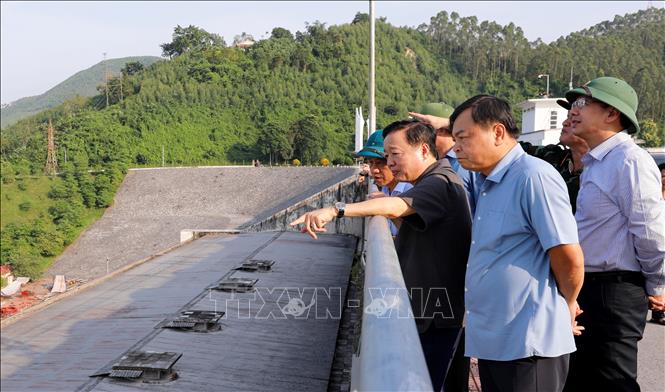
The situation of "storm on storm, flood on flood" poses an urgent requirement for localities and units to respond flexibly, not to be subjective, especially to ensure the safety of dikes and dams.
On October 4, Deputy Prime Minister Tran Hong Ha signed and issued Official Dispatch No. 186/CD-TTg on proactively responding to Storm No. 11; emphasizing that the storm could cause flash floods, landslides in mountainous provinces, midlands of the North and North Central regions, as well as flooding in urban areas and low-lying areas. The Official Dispatch also clearly mentioned the danger to the transportation system, dykes, dams, especially those that were damaged by previous storms and floods that have not been promptly repaired.
At the meeting on the afternoon of October 3, Deputy Prime Minister Tran Hong Ha requested localities to mobilize forces to immediately handle weak river and sea dikes and urgently repair damaged areas caused by storm No. 10. This must be done in parallel with preparations for storm No. 11.
Deputy Minister of Agriculture and Environment Nguyen Hoang Hiep said: From Quang Ninh to Hue, there are currently 62 vulnerable locations in the dike system. Most sea dikes are designed to withstand storms of level 9-10, while storm No. 11 can reach level 12, gusting to level 15, exceeding the design threshold. After storm No. 10 and the subsequent floods, the dike system has recorded 45 incidents. Although many localities have promptly handled the situation, further reinforcement is still needed to ensure safety under new pressure.
According to Deputy Minister Nguyen Hoang Hiep, key dyke locations that have been eroded or damaged need to be prioritized for treatment. Localities and management units must be ready with forces, materials, and means according to the "4 on-site" principle to ensure the safety of dyke projects under construction and key, key, and key locations.
In addition, localities and units need to immediately deploy forces and equipment to ensure communication to serve smooth command and control before, during and after the storm - paying special attention to mountainous areas where there is a high risk of isolation.
According to Mr. Phan Tien An, Deputy Head of the Dam and Reservoir Safety Department, Department of Irrigation Works Management and Construction, from the initiative in the recent storm No. 10, with storm No. 11, the Department of Irrigation Works Management and Construction soon issued a telegram and directed localities and management units to inspect the works and immediately fix the damage that occurred during storms No. 9 and No. 10.
“The units are actively monitoring the weather and proactively planning reservoir operations. In particular, 35 reservoirs with flood control gates in the affected areas have developed reservoir operations plans, proactively lowering the reservoir water level to receive floods according to the process from 7am on October 4,” said Mr. Phan Tien An.
Deputy Minister Nguyen Hoang Hiep requested that localities and units inspect and review key works, unfinished works, especially small reservoirs that have been filled with water due to heavy rains in the area recently. Reservoir owners and relevant agencies urgently operate water discharge to reserve capacity to receive floods according to regulations, especially reservoirs in the Red River, Ma River, and Ca River basins; organize permanent forces and means to be ready to regulate and ensure safety of works and downstream areas in all situations.
Implementing the direction of the Government, ministries, and branches, localities have also proactively implemented measures to ensure the safety of dykes and dams. Right from the beginning of the 2025 storm season, the Department of Agriculture and Environment of Quang Ninh province focused on a group of solutions to improve the safety of the province's dyke system. Director of the Department of Agriculture and Environment of Quang Ninh province Nguyen Minh Son shared: The Department has proposed and received approval from the Provincial People's Committee to establish a Project to improve the safety of the province's dyke system to adapt to climate change, period 2025-2030 with a vision to 2050. In particular, the goal of the project is to propose solutions to upgrade the province's dykes to a level capable of withstanding natural disasters of similar intensity as storm No. 3 YAGI in 2024 combined with high tides.
Quang Ninh province has also had plans to protect key dike areas (such as Ha Nam dike in Lien Hoa and Phong Coc wards), has scenarios for natural disaster situations and solutions; organizes patrols, guards, proactively detects and handles construction incidents, and pays special attention to violations. At the same time, organizes training to improve the capacity of organizations and individuals in managing and protecting constructions; promotes propaganda on natural disaster prevention, protection of natural disaster prevention works...
In Hai Phong - a locality with a dense river network, the Hai Phong city government and relevant agencies are mobilizing maximum resources to ensure the safety of more than 700 km of river and sea dykes and hundreds of culverts, embankments and pumping stations before each rainy and stormy season.
To ensure the safety of the dike system against the impact of storm No. 11, Vice Chairman of Ninh Binh Provincial People's Committee Tran Anh Dung requested coastal localities to strengthen patrols on dike routes, promptly detect unsafe leakage locations, develop remedial plans to limit widespread landslides, and at the same time prepare machinery, materials, and human resources to respond to natural disasters when the storm arrives...
The city's Department of Agriculture and Environment is deploying dike management forces, always on duty 24/24 hours. Dike management units in 10 localities are assigned to develop separate response plans for each key dike line, arranging human resources, materials, and equipment to be ready to handle incidents in the first hour. In particular, Hai Duong province (old) has identified 42 key dike points and 51 vulnerable locations that need continuous monitoring.
Hung Yen province currently has 430 km of dykes; of which there are over 300 km of river dykes; nearly 69 km of sea dykes; over 43 km of river dykes, the rest is a level IV dyke system. With the motto of taking early and proactive action before natural disasters to minimize damage caused by natural disasters, Head of the Irrigation Department of Hung Yen province Dang Xuan Thanh said that the provincial Irrigation Department has advised the Department of Agriculture and Environment as well as the Provincial People's Committee to issue a document directing and requesting the People's Committees of departments, branches and localities to deploy forces to review, inspect and evaluate the entire system of dykes and irrigation works in the area. From there, the sector proposes measures and plans to handle, repair and overcome damaged construction items, promptly ensuring the safety of the dyke system before the rainy and stormy season. Every year, the province also regularly assesses and inspects the current status of flood and waterlogging prevention works, proactively repairs and repairs damages that arise outside the assigned repair plan...
Source: https://baotintuc.vn/thoi-su/ung-pho-bao-so-11-khan-cap-ung-pho-bao-chong-bao-20251005220153706.htm


![[Photo] Prime Minister Pham Minh Chinh chairs the Government's online conference with localities](https://vphoto.vietnam.vn/thumb/1200x675/vietnam/resource/IMAGE/2025/10/5/264793cfb4404c63a701d235ff43e1bd)



![[Photo] Prime Minister Pham Minh Chinh launched a peak emulation campaign to achieve achievements in celebration of the 14th National Party Congress](https://vphoto.vietnam.vn/thumb/1200x675/vietnam/resource/IMAGE/2025/10/5/8869ec5cdbc740f58fbf2ae73f065076)

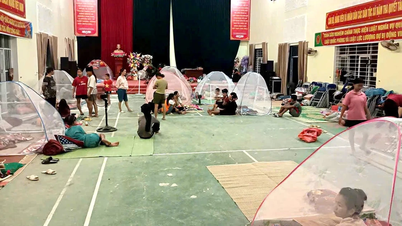

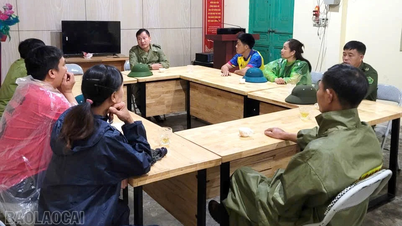

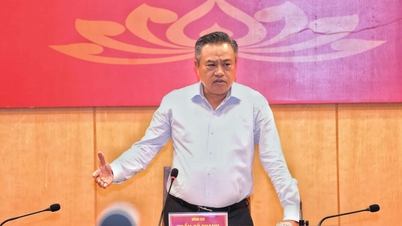
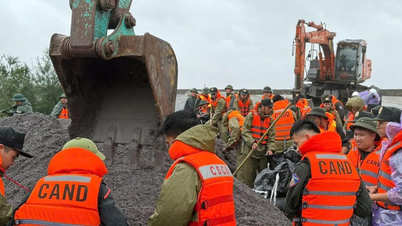

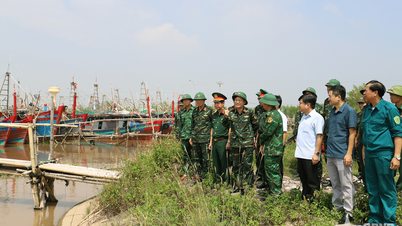

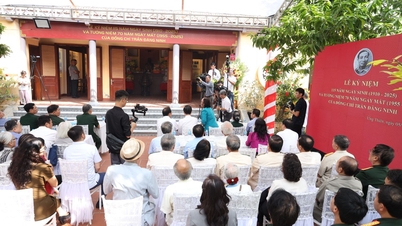

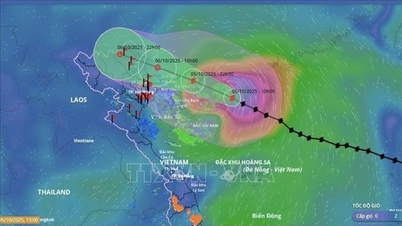
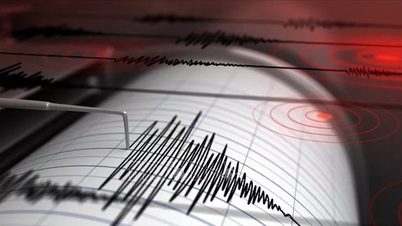







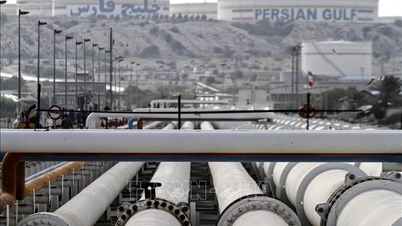




























![[VIDEO] Summary of Petrovietnam's 50th Anniversary Ceremony](https://vphoto.vietnam.vn/thumb/402x226/vietnam/resource/IMAGE/2025/10/4/abe133bdb8114793a16d4fe3e5bd0f12)

![[VIDEO] GENERAL SECRETARY TO LAM AWARDS PETROVIETNAM 8 GOLDEN WORDS: "PIONEER - EXCELLENT - SUSTAINABLE - GLOBAL"](https://vphoto.vietnam.vn/thumb/402x226/vietnam/resource/IMAGE/2025/7/23/c2fdb48863e846cfa9fb8e6ea9cf44e7)















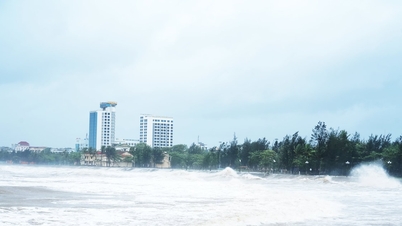




















Comment (0)